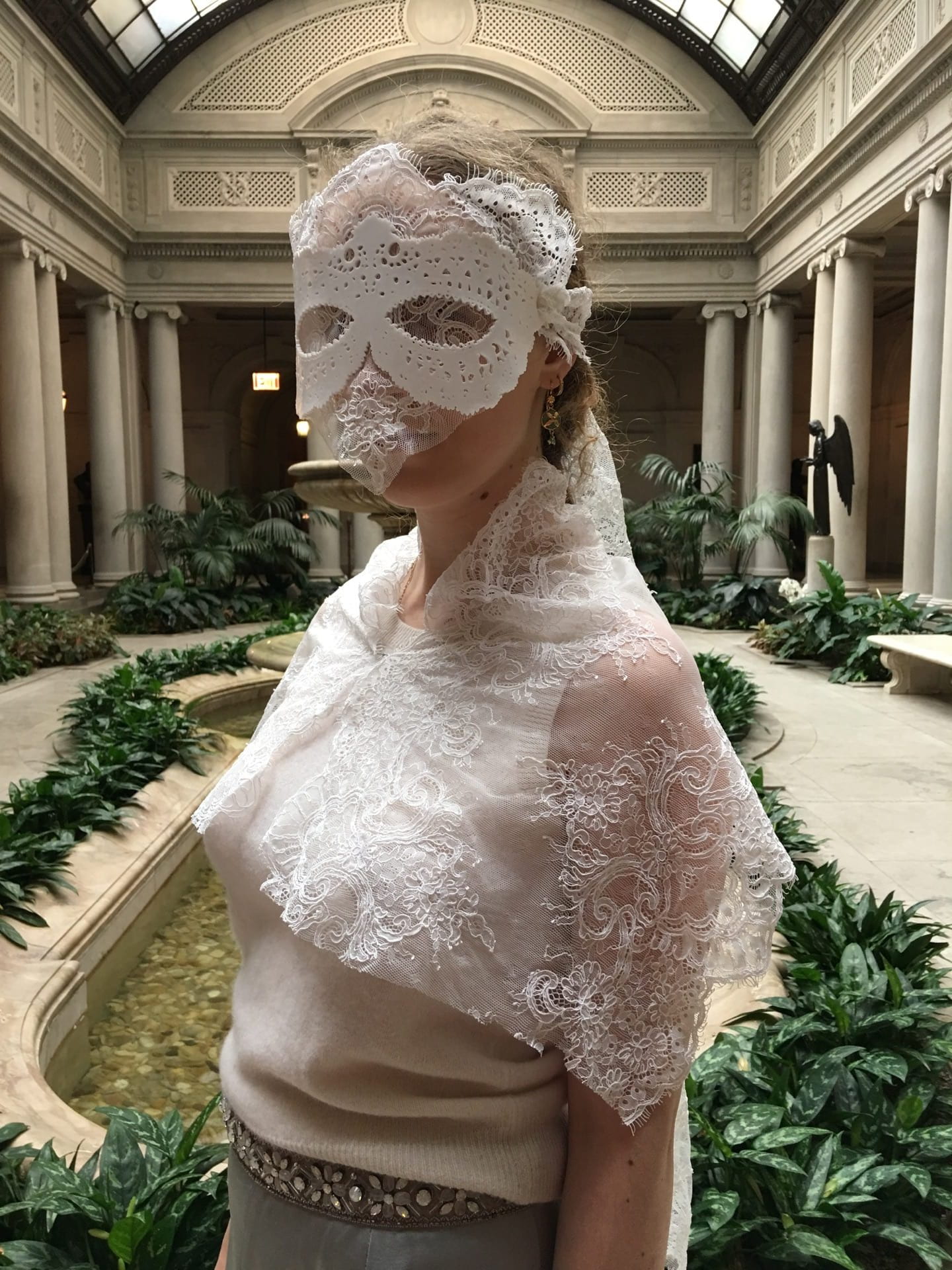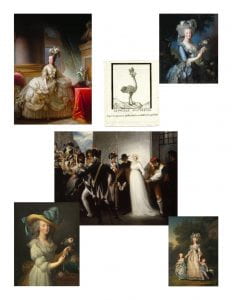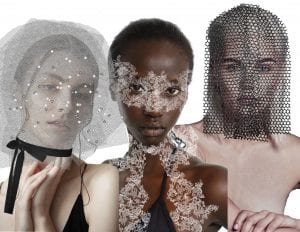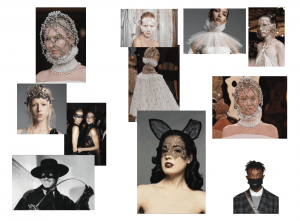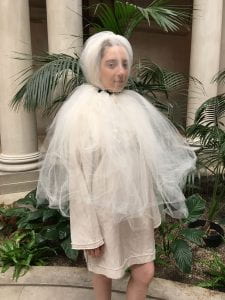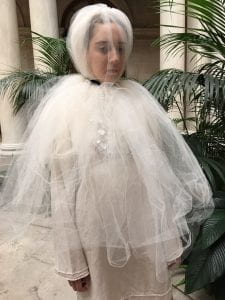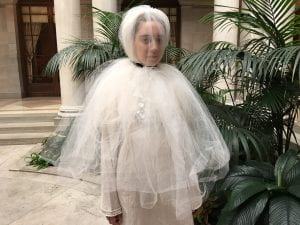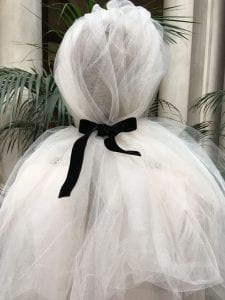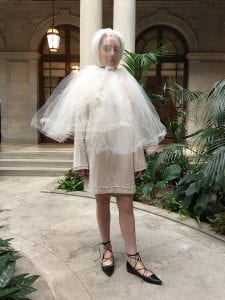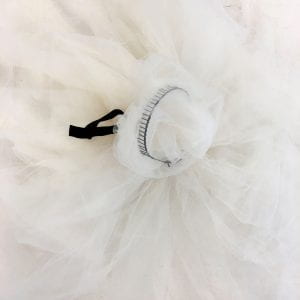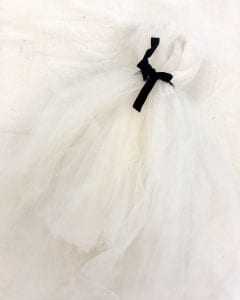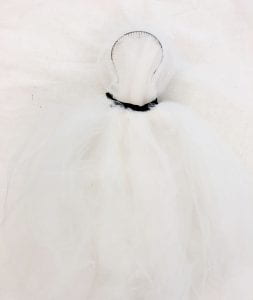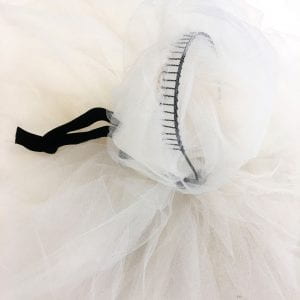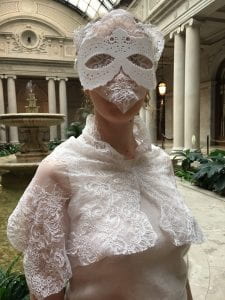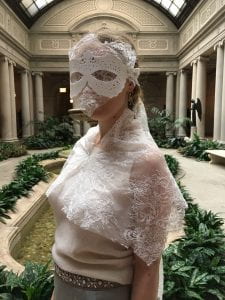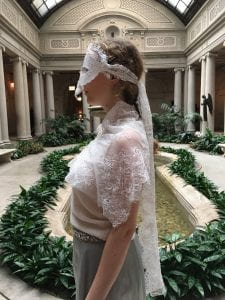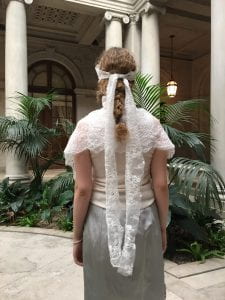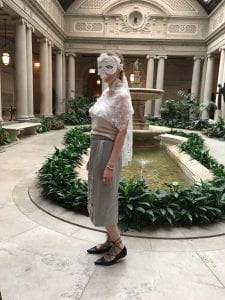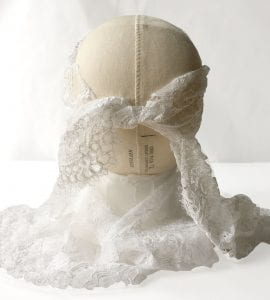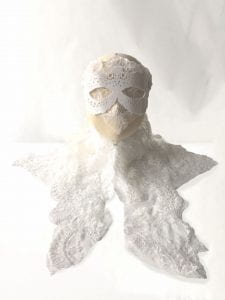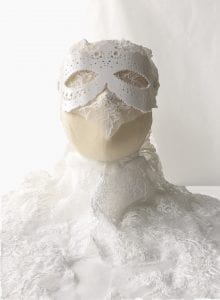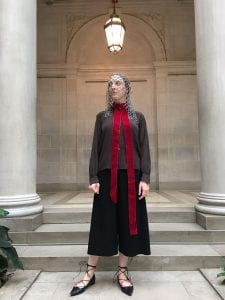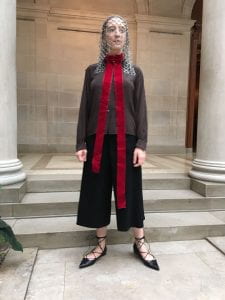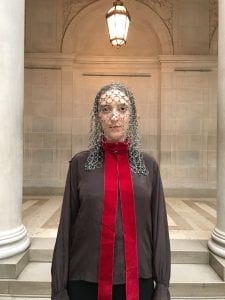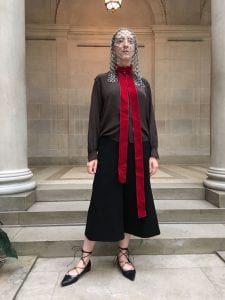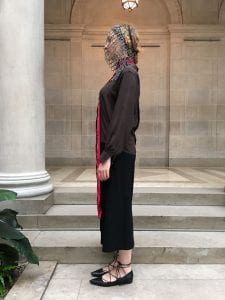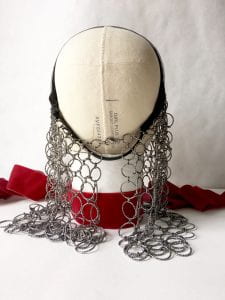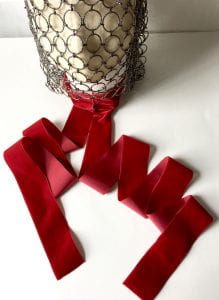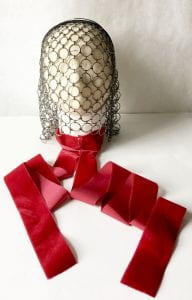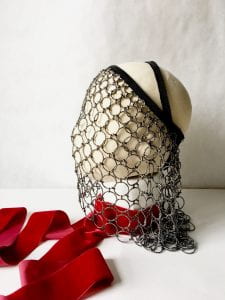Marie Antoinette is one of the most misunderstood historical figures canonized by society today. Whether it be moods of misogyny or a distaste for bourgeois class, the Dauphine taken down by the guillotine is never properly credited for the struggle which was her own conflicted existence. It is for these reasons that when prompted with masks aligning with transformation or identity that I was inspired to look towards the once daughter of Austria, Queen of France. Marie Antoinette wore her own masks to survive French aristocracy, using her visual reception to be both blessed and hurt by the public and personal perceptions of who she was. From the moment she married Louis XVI and was pressured into immediate conception, to the date of her execution, Marie Antoinette remains one of the most underestimated martyrs of our time, as her fall was long and gradual and her only faith was in fashion.
Marie Antoinette, various images; Digital sketch, reflecting initial ideas; Moodboard collage, showing a strong inspiration in fashion aesthetics as well. These images are what allowed me to choose materials and forms of the masks, denoting what points of Marie Antoinette’s life were to be focused on and which aesthetics were to be followed physically.
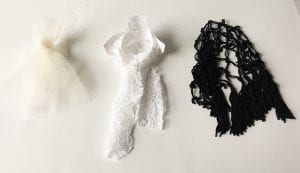

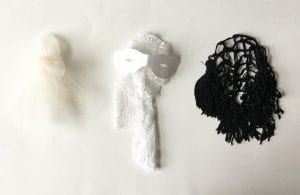
 prototype images, back and front shots
prototype images, back and front shots
The series consists of a collection of three unique masks. Each mask represents a different time frame of Marie Antoinette’s life and a different facet of her existence. The first mask represents the beginning of her end, taking form in an exaggerated bridal veil tied back by a bowed velvet choker. Viewers have critiqued its suffocating, yet swaddling appearance on its wearer, equating to the mask’s significance within Marie Antoinette’s bonding inescapable wedlock and the child-bearing expectancy which came with it. It also speaks to the Dauphine’s fleeting youth, as she was only 14 when she became Queen, wife, and to-be-expecting mother.
The second mask takes form in a masquerade mask, with the base of the mask 3D-printed off of a lace model in white, and the sash tie of the mask descending to below the hip. The solid base is then interlaced with lace interfacing, so that the wearer’s features are covered up and no expression is perceived. This reflects Marie Antoinette’s inability to express herself, and while she threw decadent parties and hid behind a lavish lifestyle, she was often powerless in achieving a stable public image.
The third and final mask is a mask which represents the tragic resolve of Marie Antoinette’s life. The chainmail veil is both a cycle conclusion and creation bearing the prison chain of the conciergerie, where the Dauphine stayed in a humble cell until the day of her beheading. The red velvet collar, which falls asymmetrically near floor-length alludes to the bloodshed of the guillotining. Marie Antoinette was stripped of all material possessions in the end, and yet Charles Henri Sanson recounts in his family memoir that she remained noble in the face of a seething public, masking once again what one could only imagine as the greatest fear.
